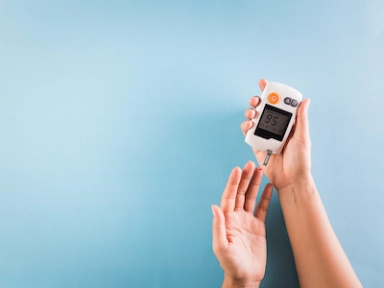Understanding Time-in-Range: Assessment, Targets, and Benefits for Optimal Glycemic Control
Beyond HbA1C, It is time to think Time-in-Range
Glycemic variability is a common challenge for people with diabetes and has a range of serious consequences1- 9
It is known today that two people with identical HbA1c level of 8.0% can have markedly different degrees of glycemic variability10*
Beyond HbA1c, rise of Time-in-Range as a new key metric for Glycemic control
Evaluating TIR can aid understanding whether hypoglycemia (time-below-range) or hyperglycemia (time-above-range) are improving with treatment over time12,13
As per the latest International Consensus on Time-in-Range, TIR is identified as a metric of glycemic control that provides more actionable information than HbA1C alone11
Optimizing HbA1c to <7.0%12,14 and reducing Glycemic variability: TIR>70% and %CV≤36%6,12,13 helps achieve better patient outcomes9,13-16
Which Time-in-Range target should you aim for?
International guidelines recommend a target of>70% TIR (70-80 mg/dL) for most adult patients with T1DM or T2DM11,13†
Optimizing Time-in-Range
- A fundamental aspect to effective diabetes management11
*15-day glucose traces of two patients who had identical HbA1c of 8.0% but different degrees of GV. High GV in patient 1 was reflected by numerous episodes of both hypo- and hyper- glycemia, whereas low GV in patient 2 resulted in no such episodes.10
†It is recommended that most adult patients spend <1 hour per day with blood glucose <70 mg/dL (<3.9 mmol/L); <15 minutes per day with blood glucose <54 mg/dL (<3.0 mmol/L); <1 hour 12 minutes per day with blood glucose >250 mg/dL (>13.9 mmol/L); and <6 hours per day with blood glucose >180 mg/dL (>10.0 mmol/L), although CGM-based targets vary for different diabetes populations. For people with T1DM aged <25 years, if the HbA1c goal is 7.5%, then the TIR target should be set to approximately 60%. For older patients or those at high risk, the TIR target is 50% although individualized decision making is recommended. There is insufficient data to allow recommendation of TIR target for pregnant women.11,13
# Includes percentage of values <54 mg/dL (3.0 mmol/L).11
**Includes percentage of values >250 mg/dL (13.9 mmol/L).11
HbA1c, Hemoglobin A1c; TIR, Time-in-Range; CV, Coefficient of Variation; T1DM, Type 1 Diabetes Mellitus; T2DM, Type 2 Diabetes Mellitus; GV, Glycemic variability.
- Monnier L, et al. Diabetes Care. 2017;40:832–838;
- Agiostratidou G, et al. Diabetes Care. 2017;40:1622–1630;
- Cardoso CRL, et al. Cardiovasc Diabetol. 2018;17:33;
- Krishna SV, et al. Indian J Endocrinol Metab. 2013;17:611–619;
- Hirsch IB. Diabetes Care. 2015;38:1610–1614;
- Monnier L, et al. Diabetes & Metabolism. 2018;44:313–319;
- Cox DJ, et al. Diabetes Care. 2007;30:1370–1373;
- Penckofer S, et al. Diabetes Technol Ther. 2012;14:303–310;
- Lu J, et al. Diabetes Care. 2021 Feb;44(2):549-555;
- Kovatchev B and Cobelli C. Diabetes Care. 2016;39:502–10;
- Battelino T, et al. Diabetes Care. 2019;42:1593–603;
- Danne T, et al. Diabetes Care. 2017;40:1631–1640;
- ADA. Diabetes Care. 2020;43(Suppl 1):S73–S84;
- Beck RW, et al. Diabetes Care. 2019;42:400–405;
- Testa MA, et al. J Clin Endocrinol Metab. 2012;97:3504–14;
- Bergenstal RM, et al. Presented at the American Diabetes Association, 80thScientific Sessions; June 12–16, 2020. 21-LB.







